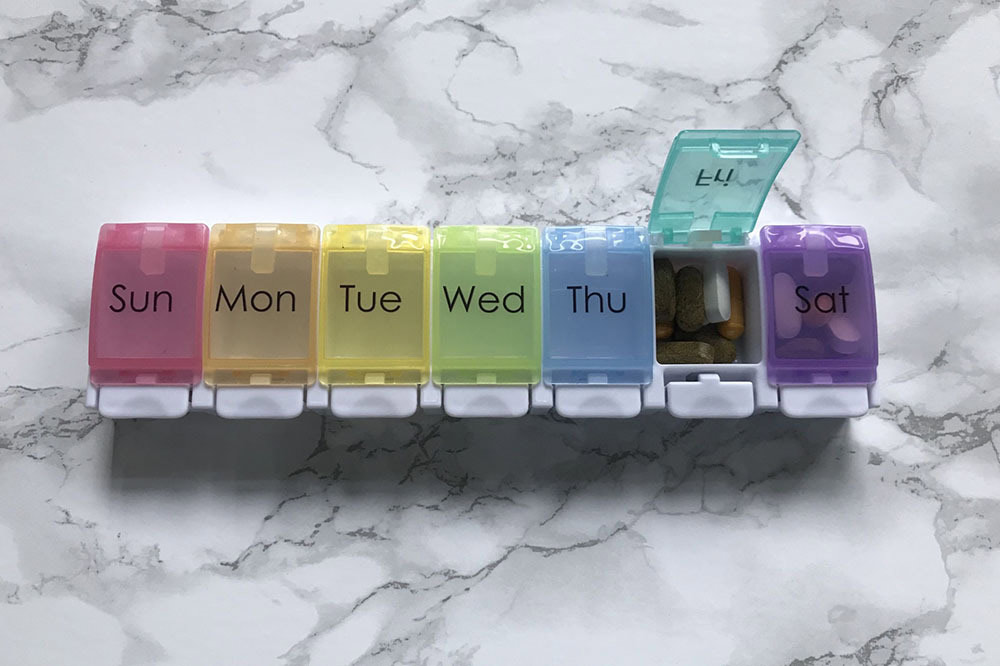Folate vs. Folic Acid: What’s the Difference?

When it comes to early pregnancy nutrition, folic acid is referenced as a mom-to-be’s best friend by health professionals. But on the labels of some prenatal vitamins, you’ll see brands tout the use of folate, specifically methylfolate, as a main selling point. So, what distinguishes the two—and which one is best?
What is folic acid?
“Folic acid is the synthetic form of folate, a water-soluble B vitamin (vitamin B9),” explains Jan Rydfors, MD, co-creator of the Pregnancy Companion app. It’s used in fortified foods, like breakfast cereals and orange juice, and is also found in many vitamin supplements. In 1998, the U.S. Food and Drug Administration (FDA) mandated that folic acid be added to enriched grain products, so if a food says “fortified” or “enriched” or “fortification” on the label, it has folic acid in it.
Folic acid is a huge player in early fetal development. In fact, it is recommended that all women of childbearing age consume 400 micrograms or more of a folic acid supplement each day. Although many organizations (including the Centers for Disease Control and Prevention, the March of Dimes, and the American College of Obstetricians and Gynecologists) agree with the recommended 400 mcg, it doesn’t hurt to get a bit more. In fact, the U.S. National Institutes of Health suggests shooting for at least 600 micrograms instead. If you have a healthy, normal pregnancy, your doctor will likely recommend you aim for 400 to 800 micrograms.
Regardless of where a woman stands on the parenting spectrum, she’s still encouraged to get in a daily dose. Because half of all pregnancies in the U.S. are unplanned and folic acid is most important in the very early days of pregnancy, medical professionals agree that it’s better to adopt a “better safe than sorry” approach and simply advise it for all women of childbearing age and not just pregnant women.
What is folate?
Folate is the naturally occurring form of vitamin B9 and is found in food sources such as green leafy vegetables, fresh fruits, lentils, Brussels sprouts, yeast and liver. This method of getting enough folate is especially helpful to moms because unlike natural folate, folic acid requires the body to convert the nutrient to the metabolically active form of folate known as L-methylfolate. When found in food, it’s usually already in this active form and makes the consumption process easier and more effective.
Why are they important?
Folate and folic acid are most well-known for their role in DNA synthesis and cell formation. Every cell in your body needs this essential vitamin to properly grow and develop, and its presence is vital for maintaining the rapid cell growth of the placenta and fetus in the early stages of embryonic development. A lack of this nutrient can lead to neural tube defects (NTDs) in the fetus, which are serious birth defects of the spinal cord (spina bifida) and brain (anencephaly) that happen when growth is not properly achieved. These defects occur very early in pregnancy, typically within the first 28 days, and oftentimes before a woman even knows she is expecting.
Both are also needed to make red blood cells, which carry oxygen to your body and your baby. During pregnancy, your body produces more blood than it normally does, and mild anemia due to a lack of healthy red blood cells isn’t uncommon. Folic acid and folate, along with iron and certain other nutrients, help to prevent this. In addition, studies show that the nutrients could reduce your baby’s risk of certain other non-NTD birth defects, including some heart defects, cleft lip and cleft palate, and it might lower your risk of preeclampsia.
Folate specifically is also a coenzyme, meaning it helps other enzymes in the body perform their jobs. There is one compound in particular called homocysteine that’s converted into methionine (an amino acid) when it comes alongside folate. When there is a natural folate deficiency, this compound can become elevated. High levels of homocysteine have been linked to recurrent miscarriages and infertility as well as complications with PCOS, making adequate absorption critical for women’s health.
Is one better than the other?
As mentioned above, absorption plays a big role in the battle of folate versus folic acid. Being the human-made version of the two, folic acid is molecularly stable, which is why it’s widely available in dietary supplements. Up until recently, folic acid was considered better-absorbed than dietary folate.
However, remember that methylfolate is not only well-absorbed, but it doesn’t require the same enzyme conversion process as folic acid once it comes in contact with your cells, making it more efficiently utilized. Methylfolate is also the most active form of folate in the body and therefore may be the superior choice for including in your prenatal vitamin.
Another caveat is concern over folic acid build up that’s not properly converted into the necessary active form. These high levels of unmetabolized folic acid collect in the bloodstream and may come with some harsh side effects, such as possible increased risk of cancer and undetected vitamin b12 deficiency, which is being studied in connection to heightened risk of dementia and poor nerve function. These studies are still ongoing and have not resulted in definitive health implications.
While the choice between different forms is certainly yours to make with the guidance of your health care provider, know that getting enough folate or folic acid is very important for your baby, so don’t delay or attempt to skip it as part of your prenatal health routine.
Once baby has arrived, continue to take a prenatal every day while breastfeeding. When baby is weaned, you can go back to a regular multivitamin. However, keep in mind that even if you’re planning on waiting awhile before adding to the family again, you never know what might happen. Play it safe by making folate intake a priority.








